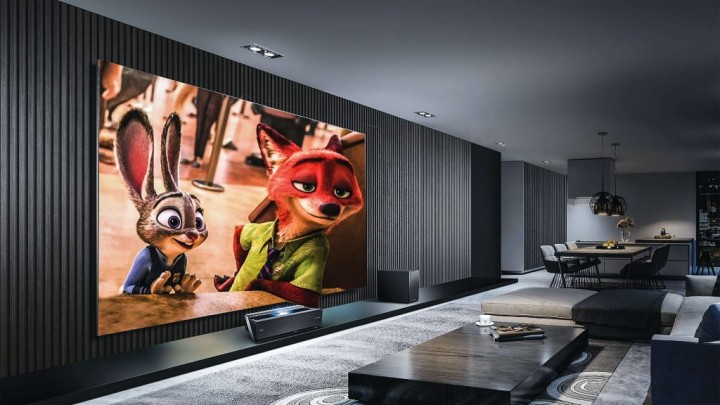
There is only one thing better than going to the movies: bringing the movies into your home. If you’re a cinema buff but the pandemic has stood between you and your favorite hobby of catching the latest titles while crunching on popcorn, you might have thought about creating a cinema-like atmosphere in your own home. If you have space to spare or an extra room you never use anyway, turning it into a home cinema is certainly one of the best things you could do with it. From a laid-back entertainment room all the way to a full-fledged theater, you can make it as simple or as extravagant as you want. Here is how to do it.
Decide On the Concept And Location
Before you can get down to your DIY project, you need to come up with a concept you will be sticking to. Creating a space solely dedicated to streaming movies would be the most ideal. That way, you can truly feel like you’re at the movies with no distractions to ruin your experience. Consider how you plan to use the room – will you be relaxing in it mostly with your family or do you have a large friend group who share your interest in movies? Consider where your home theater is going to be and how much space you have at your disposal to come up with a concept that will work.
Figure Out the Tech
The most important part of creating a home theater is getting the audio and video systems right. You first need to decide whether you are going to use a large-screen television or a projector for your screenings. TVs might be the more expensive option, but their advantage is that they perform well even if the room is not completely dark. As for the size, if you are working with a smaller room, a TV screen should be enough. On the other hand, we have projectors. For an authentic cinema experience, this should be your go-to. They win at size and price, however, keep in mind that they work best in the dark and any ambient light might make things hard to see. Installing a projector is quite complicated, too, but you can always call professionals to do it properly.
Mind the sound
A 5.1 sound system is a must for any home theater. But that’s not all. You cannot possibly get immersed in a movie if you keep hearing every movement in the house. This means that you will likely need to soundproof your home cinema for the best effect. Add a second layer of insulation to your room, cover the walls with carpet tiles, and the floor with thick carpet. If you want to take it a step further, you can also go for upholstered walls or special acoustic wall panels made for home cinemas. If your home theater has windows, make sure you have both blinds and thick curtains that will reduce both ambient light and sound.
Bring In Comfort
Another central part of any home theater is the seating. When it comes to the seating, you truly have a lot of freedom. What’s universally true is that comfort comes first. Do you want real, authentic theater-style seating, or will you go for sofas and loveseats instead? Do you want a more formal feel with rows of seats or a more casual atmosphere with personalized bean bags? You can also combine a variety of different seating options so that everyone can choose what they like best, or even create groupings of seats for cozy family nights.
Arrange the Seats
Getting all the comfy seats is not the end of the story. You will also need to take several things into account and possibly do some math when arranging them. Your screen size will determine the optimum viewing angle and this is something that you must follow for the most comfortable watching experience. If you already have a TV or projector screen, use a viewing distance calculator to see what rule to follow. If you have yet to buy your video equipment, make sure you keep in mind your room size and the number of seats you intend on inserting.
Control the Lights
The lighting is a crucial part of the cinema experience. Not only do you need to block out all ambient light, but you also need to be able to create several different lighting conditions in the room. As we already mentioned, thick curtains are a must if you have windows in your home cinema. In addition, keep in mind that reflective surfaces can be really disruptive when watching a movie. Steer clear of placing anything reflective around the screen to prevent distractions. If there are still reflective objects such as doorknobs within view, consider painting them to reduce glare. As for the lights themselves, it would certainly be most convenient to use remote-controlled lights. Also, install fixtures at various heights to control the illumination better. For instance, placing a few soft lights around the floor will be helpful if someone wants to get up during a movie.
Think About the Aesthetics
A part of the cinema experience is simply enjoying that classic cinema aesthetic: red velvet walls, movie posters, soft lighting … you can recreate this aesthetic in your own home, too. When it comes to the colors, make sure you go for something dark. You don’t necessarily have to go for that luxurious red if that’s not your cup of tea; you can instead create a rather modern look with sleek black or dark blue. Make sure you paint your ceiling to a dark matte shade as well. If you do want to display some treasured movie posters to boost the atmosphere, make sure you don’t do it around the screen.
Deciding to create a home cinema cannot be a bad decision. However, there is a lot of thought that needs to be put into it if you want to do it right. Make sure you do your homework before getting started and you’ll be able to create your own cozy theater!
We hope you found this blog post How to Create a Home Cinema?, useful. Be sure to check out our post Home Theater Essentials for more great tips!
Have Experience in the Moving Industry? Want an Additional Income Stream? Work With All Around Moving!
Moving consultants make good income. Click here to learn more.






